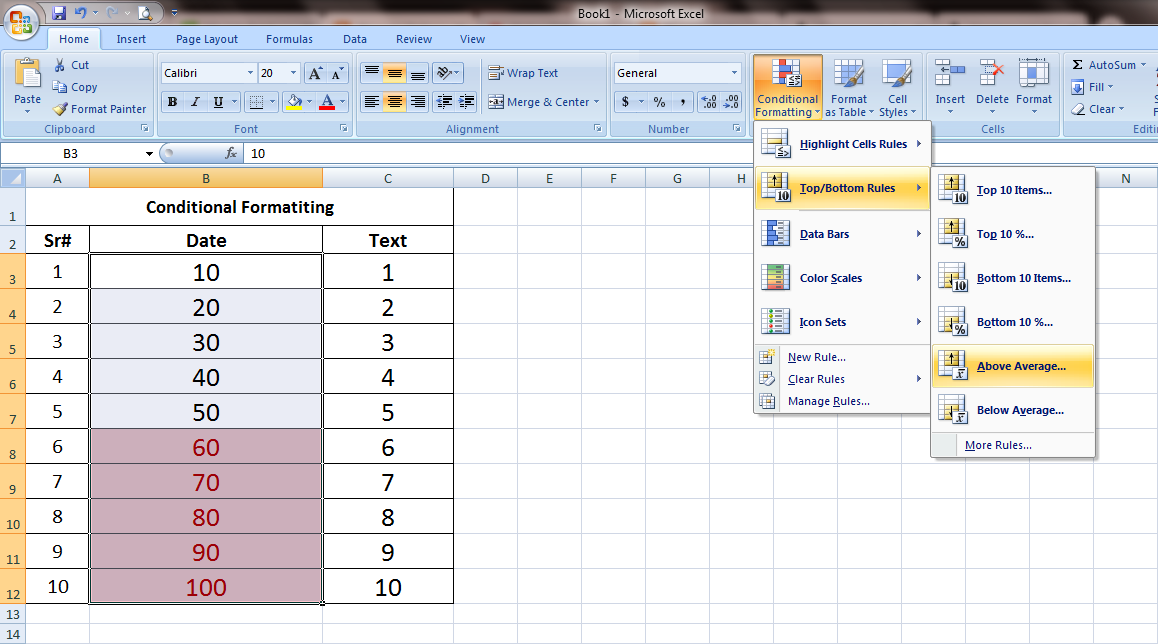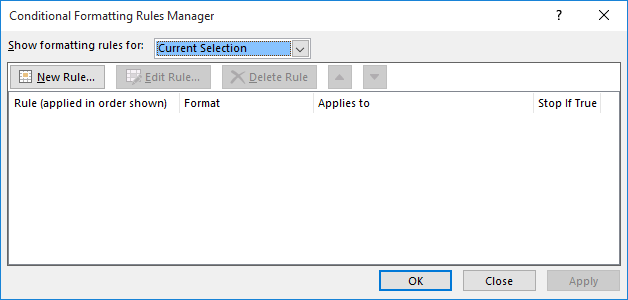

In the New Formatting Rule dialog box, click Use a formula to determine which cells to format from Select a Rule Type list box, and then enter this formula =B2=MAX($B2:$E2) into the Format values where this formula is true text box, see screenshot: Then click Home > Conditional Formatting > New Rule, see screenshot:ģ. Select the data range that you want to highlight the largest value in each row.Ģ. To make the highest or lowest value standout from each row, please apply the following formula into the Conditional Formatting.ġ.

Select largest / lowest value in each row or column and shade them at once with Kutools for Excel Highlight largest / lowest value in each row or column In this case, the Conditional Formatting feature in Excel can do you a favor. If you have multiple columns and rows data, how could you highlight the largest or lowest value in each row or column? It will be tedious if you identify the values one by one in each row or column. Tip: If you are using MAC, use CHAR(13) instead of CHAR(10).How to highlight largest / lowest value in each row or column?

To wrap text, go to Home –> Alignment –> Wrap Text.
/001-conditional-formatting-in-google-sheets-4161035-f8b4a90458e6405e9bf41ea1b59bf8aa.jpg)
IMPORTANT : For this to work, you need to wrap text in excel cells. This formula would enter a line break in the formula result and you would see something as shown below: To insert a line break in this formula result, we need to use CHAR(10) along with the above formula.ĬHAR(10) is a line feed in Windows, which means that it forces anything after it to go to a new line. If I am creating a mailing address out of this, I need the text from each cell to be in a new line in the same cell. You can try using the text wrap, but that wouldn’t work either. While this combines the text, this is not really the format that I want. So you can use the good old CONCATENATE function (or the ampersand & character) to combine cells and get line break in between.Īgain, considering you have the dataset as shown below that you want to combine and get a line break in between each cell:įor example, if I combine using the text in these cells using an ampersand (&), I would get something as shown below: If you’re using Excel 2016 or prior versions, you won’t have the TEXTJOIN formula available. Note: If you are using MAC, use CHAR(13) instead of CHAR(10). Once you click on the Wrap Text option, you will see the resulting data as shown below (with each address element in a new line): To enable Wrap text, select the cells with the results, click on the Home tab, and within the alignment group, click on the ‘Wrap Text’ option. To make sure you have all the line breaks in between each part, make sure the wrap text feature is enabled. The following formula will do this: =TEXTJOIN(CHAR(10),TRUE,A2:E2)Īt first, you may see the result as one single line that combines all the address parts (as shown below). If you’re using Excel 2019 or Office 365 (Windows or Mac), you can use the TEXTJOIN function to combine cells and insert a line break in the resulting data.įor example, suppose we have a dataset as shown below and you want to combine these cells to get the name and the address in the same cell (with each part in a separate line): While keyboard shortcut is fine when you are manually entering data and need a few line breaks.īut in case you need to combine cells and get a line break while combining these cells, you can use a formula to do this. Start a New Line in Excel Cell Using Formula
#Conditional format excel mac for each line windows


 0 kommentar(er)
0 kommentar(er)
